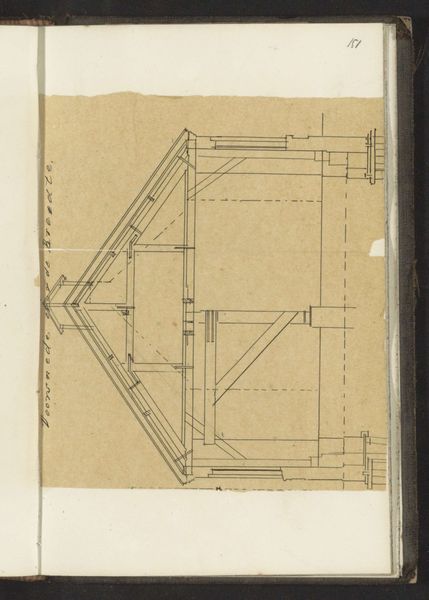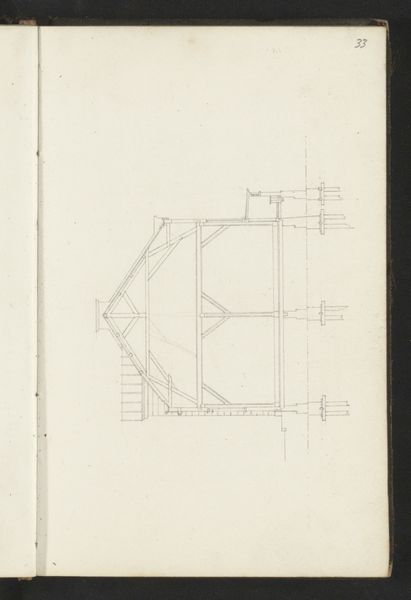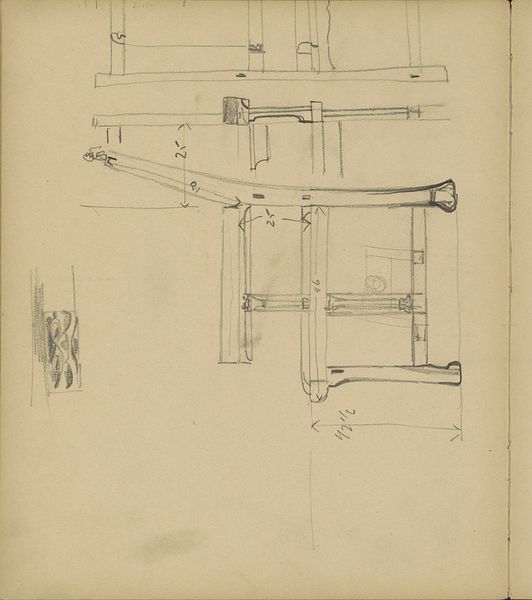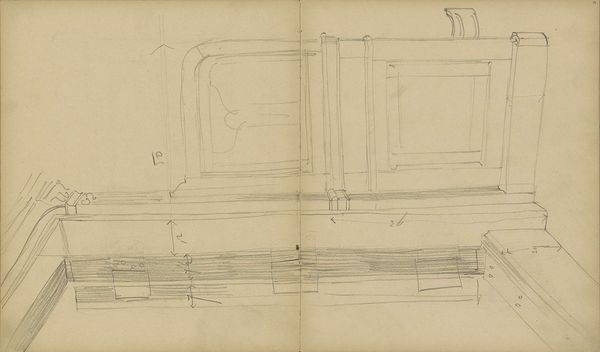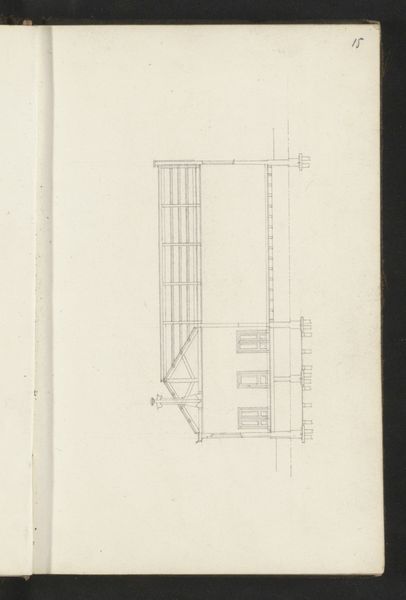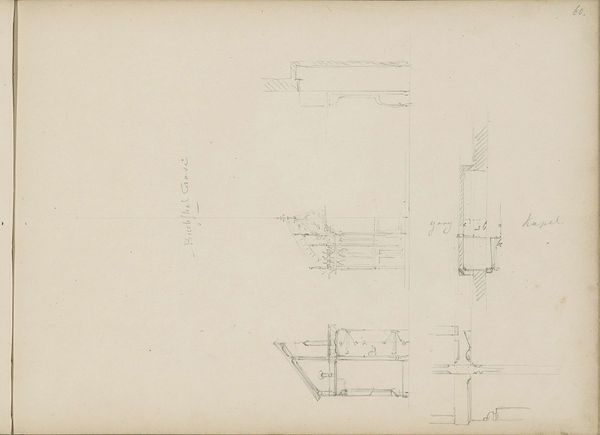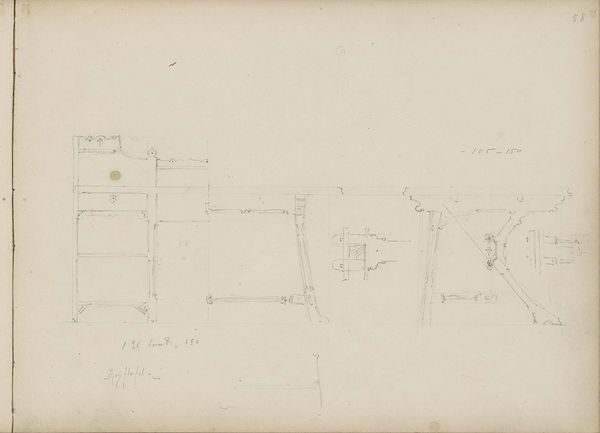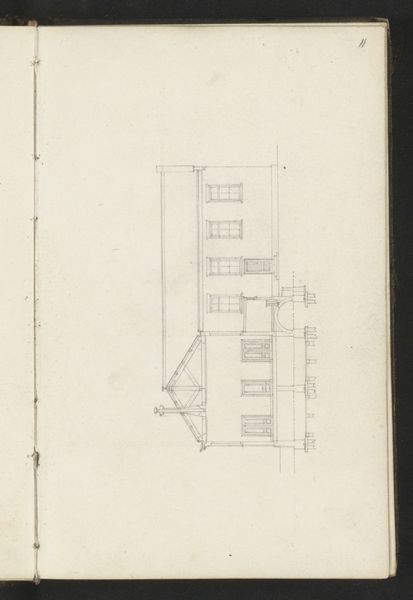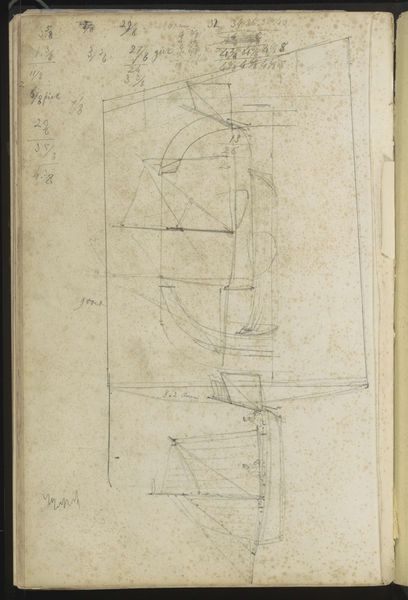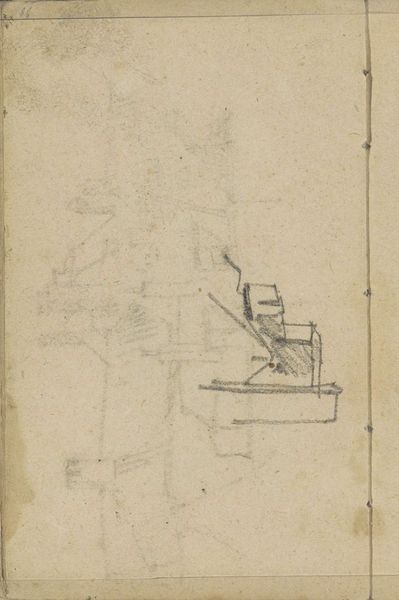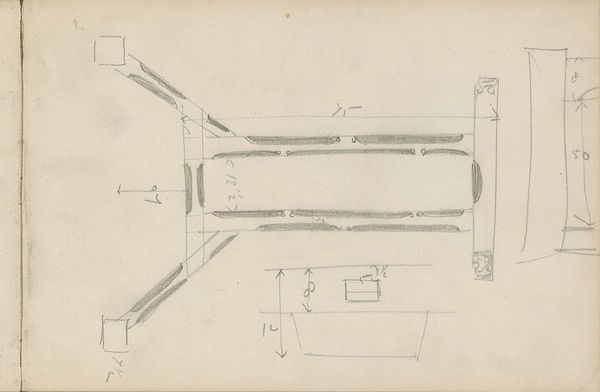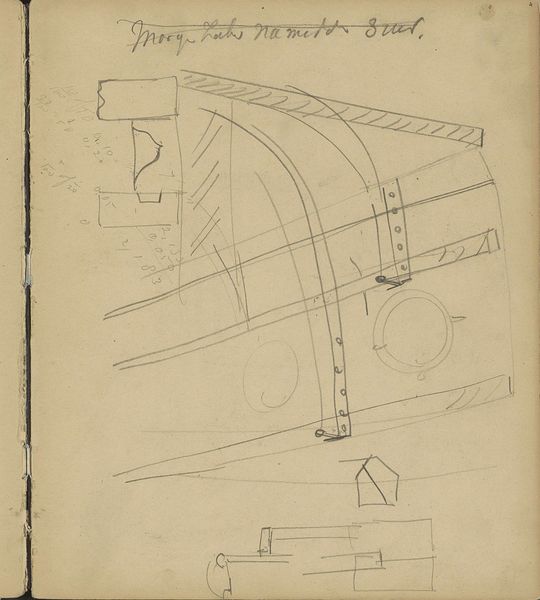
drawing, paper, pencil, architecture
#
architectural sketch
#
drawing
#
aged paper
#
toned paper
#
art-nouveau
#
sketch book
#
incomplete sketchy
#
paper
#
form
#
personal sketchbook
#
idea generation sketch
#
sketchwork
#
geometric
#
detailed observational sketch
#
pencil
#
storyboard and sketchbook work
#
architecture
Copyright: Rijks Museum: Open Domain
Curator: Here we have "Ontwerp voor een stoel," a chair design from around 1906 by Carel Adolph Lion Cachet, housed here at the Rijksmuseum. It’s a pencil drawing on paper, possessing an evocative Art Nouveau style. Editor: Mmm, aged paper! Gives me a feeling like stumbling upon a secret blueprint in a dusty attic. It has that appealing "almost complete" vibe that I often try to achieve with my artwork. Curator: The incomplete nature aligns with the concept of the sketch as a space for idea generation, a place where the artist could experiment freely. Given Cachet’s focus on decorative arts, particularly within the Dutch Art Nouveau movement, this drawing provides crucial insight. We need to recognize that form was not just about aesthetics, it reflected larger social ideologies around craftsmanship. Editor: Ideologies in a chair? Seriously? I mean, I see how these elongated lines, sort of mirroring the stems of flowers, would have an audience in its time. Reminds me, in an odd way, about what it is that chairs signify. I can just imagine sinking down after an exceptionally long day, to sit, and forget about theory, philosophy and gender politics. Is this naive? Curator: Perhaps. However, one must understand the chair within the socio-political dynamics of the era. Dutch Art Nouveau, for example, often grappled with questions of national identity amidst growing industrialization. Craft was celebrated in opposition to mass-produced goods. It wasn't *just* a chair; it was a statement about labor and artistry. We must not ignore Cachet’s cultural milieu, or broader conversations on gender roles and design during the early twentieth century. Editor: Ok, ok, you've convinced me. Every object tells a story, I guess. What is remarkable to me, though, is just how fresh this design feels, after all this time! Curator: Exactly! Cachet's chair tells us something significant about its moment. The chair can, and indeed *should*, evoke the wider scope of early 20th-century culture in the Netherlands. Editor: And for me, well, it gives me an idea for my next project. So thank you, Mr. Cachet. And thank *you*, my friend.
Comments
No comments
Be the first to comment and join the conversation on the ultimate creative platform.
